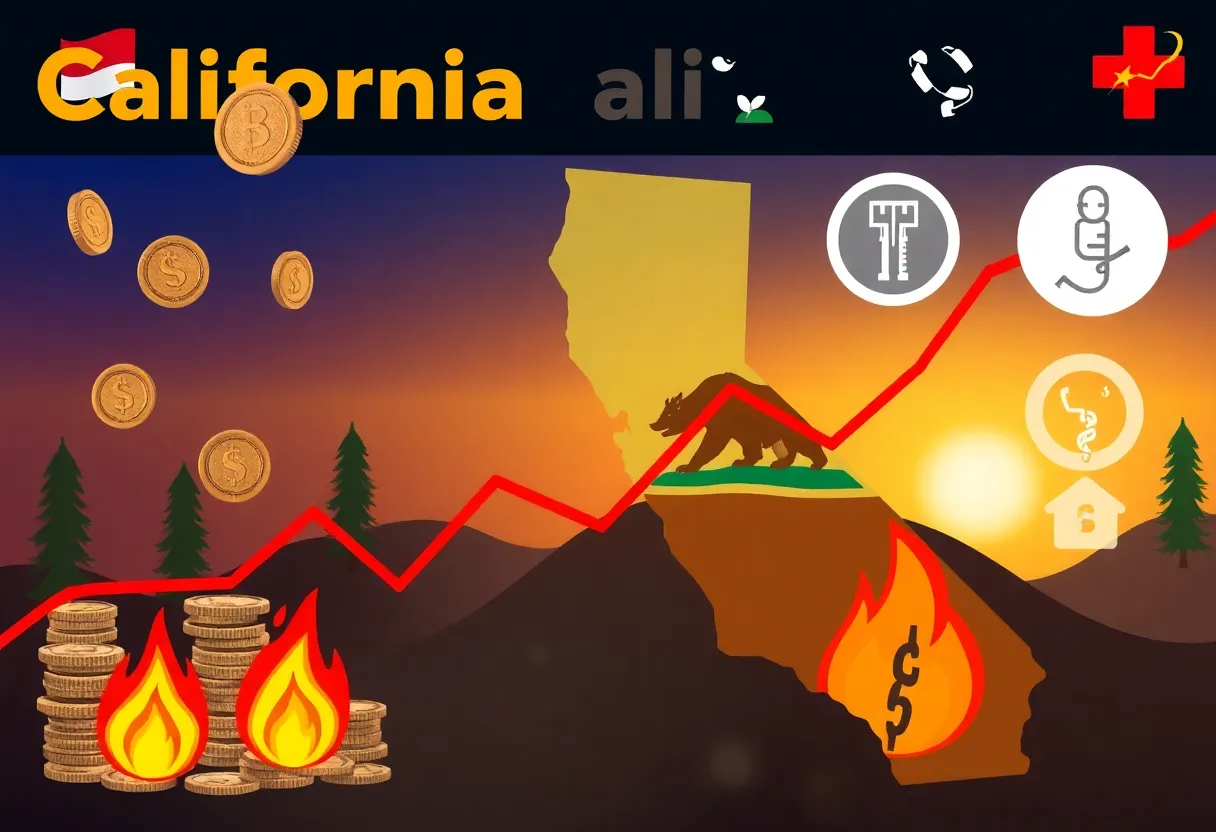News Summary
California is grappling with a projected $12 billion budget shortfall for the 2024-2025 fiscal year, attributed to factors like federal tariffs, rising healthcare costs, and devastating wildfires. Governor Gavin Newsom revealed this alarming shift during a news conference, highlighting the economic challenges impacting the state’s financial landscape. Proposed measures include significant cuts in Medi-Cal funding and various social services, sparking criticism from advocacy groups. California lawmakers must collaborate to create a balanced budget by July 1 amidst increased costs and revenue projections that signify harsh economic realities.
California is facing a projected budget shortfall of $12 billion for the upcoming fiscal year, as revealed by Governor Gavin Newsom during a news conference in Sacramento. This shortfall is part of the revised state budget for 2024-2025 and is attributed to various factors, including the impacts of previous federal tariff policies, escalating healthcare costs, and significant destruction from wildfires that have affected parts of Los Angeles.
Earlier in January, analysts had anticipated a balanced budget following several years of deficits. However, the sudden downturn in financial projections indicates a considerable shift in the state’s economic landscape. The wildfires in Los Angeles, which have destroyed entire neighborhoods, have further exacerbated the existing economic challenges.
The trade policies introduced during former President Donald Trump’s administration, particularly his tariffs on imports, have had devastating effects on California’s economy. These tariffs have prompted retaliatory measures worldwide, which have been detrimental to the state’s revenue streams. Estimates suggest that Trump’s tariffs could lead to a loss of approximately $16 billion in state revenue, primarily due to decreases in capital gains tax revenue following stock market fluctuations.
California’s tax structure significantly relies on income from high earners, whose financial success can vary with the stock market. This dependency has made the state vulnerable to economic adjustments, as evidenced by recent downturns in financial markets after the implementation of Trump’s tariffs.
Additionally, California has introduced temporary delays in tax deadlines as a response to the wildfires, complicating revenue calculations for the state. Medi-Cal, the state’s health insurance program catering to low-income individuals, finds itself in a precarious financial situation. Spending on Medi-Cal is projected to exceed initial forecasts by $10 billion, affecting approximately one-third of the state’s resident population.
In an attempt to alleviate the financial strain on the Medi-Cal program, Governor Newsom has proposed that undocumented individuals enrolled in Medi-Cal contribute $100 per month in premiums. The proposal also entails freezing new enrollment for this demographic starting next year. Proposed budget cuts include $700 million from in-home care services for the elderly and disabled, as well as $450 million from health clinics that serve low-income populations.
Governor Newsom has criticized former President Trump’s tariff policies, describing the resultant economic conditions as a “Trump slump,” emphasizing the detrimental impact these have had on California’s economic development. The state budget proposal totals $321.9 billion, with $226 billion coming from the general fund. Lawmakers must collaborate to produce a balanced budget before the next fiscal year begins on July 1.
Efforts to tackle housing and homelessness have also been curtailed, as Newsom’s administration was unable to renew funding for vital programs aimed at supporting low-income housing and addressing homelessness issues. The proposed cuts to Medi-Cal and other health services have sparked criticism from advocacy groups and unions aligned with Democratic principles, expressing concerns regarding the potential adverse effects on vulnerable groups.
Beyond these cuts, the budget proposal includes a reallocation of $1.5 billion from a climate change prevention fund to assist firefighting efforts, as well as plans to utilize $7 billion in reserves to mitigate deeper budget cuts. The budget framework also anticipates decreased funding for K-12 schools and community colleges, with a reduction of $250 million in 2024-25 and nearly $4.4 billion in 2025-26.
Additional financial considerations arise from increased costs linked to Propositions 35 and 36, further complicating the budget landscape. Despite these adjustments, the proposal aims to ensure the continuation of support for social programs amidst the challenges presented by the projected budget shortfall. Governor Newsom emphasized the importance of balancing immediate financial requirements with long-term fiscal stability and planning, particularly given the prevailing economic uncertainties.
Deeper Dive: News & Info About This Topic
- Los Angeles Times
- Wikipedia: California State Budget
- ABC30
- Google Search: California budget deficit
- San Francisco Chronicle
- Google Scholar: California budget deficit
- Mercury News
- Encyclopedia Britannica: California budget shortfall
- The Hill
- Google News: California budget news

Author: STAFF HERE CORONADO
The Coronado Staff Writer represents the experienced team at HERECoronado.com, your go-to source for actionable local news and information in Coronado, San Diego County, and beyond. Specializing in "news you can use," we cover essential topics like product reviews for personal and business needs, local business directories, politics, real estate trends, neighborhood insights, and state news affecting the area—with deep expertise drawn from years of dedicated reporting and strong community input, including local press releases and business updates. We deliver top reporting on high-value events such as the Coronado Island Film Festival, productions at Lamb’s Players Theatre, community workshops at John D. Spreckels Center, and iconic celebrations at Hotel del Coronado. Our coverage extends to key organizations like the Coronado Chamber of Commerce and Visit Coronado, plus leading businesses in hospitality, dining, and tourism that drive the local economy. As part of the broader HERE network, including HERESanDiego.com, HEREHuntingtonBeach.com, HERELongBeach.com, and HERELosAngeles.com, we provide comprehensive, credible insights into Southern California's dynamic landscape.





